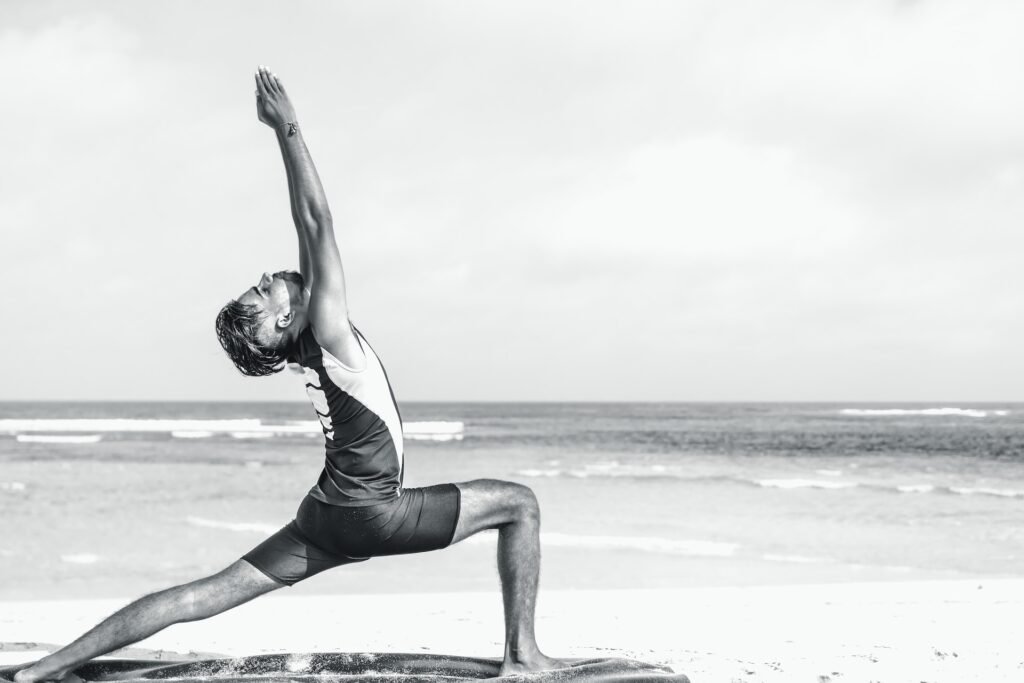Fitness journey involves more than just breaking a sweat; it requires a holistic approach that includes understanding the significance of pre-workout stretching. In this comprehensive guide, we unravel the mysteries surrounding pre-exercise stretching, debunking common myths and providing practical insights into seamlessly incorporating it into your fitness routine. From dispelling the notion that stretching weakens muscles to exploring the science behind it, we delve into the dos and don’ts, dynamic versus static stretches, and the critical role flexibility plays in injury prevention. Whether you’re a seasoned fitness enthusiast or a beginner, this guide aims to demystify pre-workout stretching, offering key benefits, practical tips on integration, and insights into calculating the ideal duration. Get ready to enhance your workout experience and pave the way for a safer, more effective fitness journey.
| Aspect | Description & Tips |
|---|---|
| Importance of Pre-Workout Stretching | Pre-workout stretching is essential for enhancing flexibility, increasing blood flow, reducing injury risk, and activating muscles. Tips: Make it a habit, integrate dynamic stretches, and focus on specific muscle groups. |
| Dynamic vs. Static Stretching | Dynamic stretching involves controlled movements and is ideal for warm-ups. Static stretching involves holding positions and is effective for cooldowns. Tips: Combine dynamic and static stretches based on your workout goals. |
| Benefits of Effective Pre-Workout Stretching | Improved flexibility, enhanced blood circulation, reduced muscle soreness, and increased joint health. Tips: Prioritize consistency, customize stretches to target muscles, and combine stretching with warm-up activities. |
| Role of Flexibility in Preventing Injuries | Flexibility acts as a buffer against unexpected movements, distributes stress evenly, and adapts the body to varied workouts. Tips: Focus on controlled stretching, maintain even stress distribution, and adapt to diverse workout routines. |
| Dispelling the Myth of “Stretching Weakens Muscles” | Contrary to the myth, stretching, when done correctly, strengthens muscles by promoting elasticity and efficient contraction. Tips: Emphasize controlled and intentional stretching to complement muscle strength. |
| Calculating Ideal Duration for Pre-Workout Stretching | Ideal duration varies individually. Aim for 5-10 minutes of dynamic stretching during warm-up. Tips: Experiment and adjust based on age, fitness level, and workout type. Listen to your body and gradually increase duration as flexibility improves. |
- Understanding the Importance of Pre-Workout Stretching
- Common Myths and Misconceptions about Stretching Before Exercise
- The Science Behind Pre-Workout Stretching: Debunking the Myths
- Dynamic vs. Static: Choosing the Right Stretch for Your Workout
- How to Incorporate Pre-Workout Stretching into Your Routine
- Key Benefits of Effective Pre-Workout Stretching
- The Role of Flexibility in Preventing Injuries
- Dispelling the Notion of "Stretching Weakens Muscles"
- Calculating the Ideal Duration for Pre-Workout Stretching
- Final Thoughts:
- FAQs:
Understanding the Importance of Pre-Workout Stretching
In the realm of fitness, pre-workout stretching often takes a back seat, overshadowed by the excitement of the upcoming exercise. However, understanding its pivotal role is essential for optimizing your workout routine. Let’s explore why pre-workout stretching deserves a prime spot in your fitness regimen.
Enhancing Flexibility:
One of the primary benefits of pre-workout stretching is its impact on flexibility. Stretching before exercise helps improve the range of motion in your joints and muscles, ensuring you can move more freely during your workout.
Increasing Blood Flow:
As you stretch, blood flow to the muscles increases. This surge in blood circulation delivers oxygen and nutrients to the muscles, priming them for the physical exertion that follows. Improved blood flow also helps in preventing injuries by ensuring your muscles are adequately supplied with nutrients.
Reducing the Risk of Injuries:
Engaging in pre-workout stretching is like giving your muscles a heads-up about the impending physical activity. This proactive approach reduces the risk of injuries by preparing your muscles, tendons, and ligaments for the stresses they are about to endure.
Activating Muscle Engagement:
Stretching activates the neuromuscular connection, enhancing the communication between your brain and muscles. This increased activation sets the stage for better muscle engagement during your workout, potentially leading to more effective and targeted movements.
Common Myths and Misconceptions about Stretching Before Exercise
Myth: Stretching Weakens Muscles
One of the most prevalent myths about pre-workout stretching is that it weakens muscles. In reality, when done correctly, stretching enhances muscle elasticity and strength by promoting a wider range of motion.
Myth: Only Athletes Need to Stretch
Contrary to popular belief, stretching is not reserved for elite athletes. Whether you’re a seasoned fitness enthusiast or just starting, pre-workout stretching is essential for everyone. It lays the foundation for a safer and more effective exercise routine.
Myth: Stretching Eliminates the Need for Warm-up
Stretching is not a substitute for a proper warm-up. While it increases flexibility, a dynamic warm-up that includes light cardiovascular exercises is crucial for elevating your heart rate and preparing your body for more intense physical activity.
The Science Behind Pre-Workout Stretching: Debunking the Myths
Muscle Fiber Lengthening:
A common misconception is that stretching elongates muscle fibers. In reality, it temporarily increases the length of the muscle-tendon unit, allowing for greater joint range. Understanding this distinction dispels the myth that stretching physically lengthens muscles.
The Stretch Reflex:
The body’s stretch reflex is often misunderstood. While it exists to prevent overstretching and injury, a well-balanced pre-workout stretching routine can train this reflex to allow for increased flexibility without compromising safety.
Oxygenation and Waste Removal:
Scientifically, pre-workout stretching facilitates better oxygenation and waste removal. As muscles stretch, blood vessels dilate, improving the exchange of oxygen and nutrients while aiding in the removal of metabolic byproducts.
Dynamic vs. Static: Choosing the Right Stretch for Your Workout
Dynamic Stretching:
Dynamic stretches involve controlled movements that mimic the activity you’re about to perform. This type of stretching is ideal for warming up as it increases blood flow, heart rate, and body temperature.
Static Stretching:
Static stretches, on the other hand, involve holding a position to stretch a muscle or group of muscles. This type of stretching is more effective post-workout or after a dynamic warm-up, as it helps improve flexibility and relaxes the muscles.
Finding the Balance:
Understanding when to incorporate dynamic or static stretches depends on your workout goals. Combining dynamic stretches for warm-up and static stretches for cooldown creates a well-rounded pre-workout stretching routine.
How to Incorporate Pre-Workout Stretching into Your Routine
Introduction:
Knowing the importance of pre-workout stretching is one thing, but seamlessly incorporating it into your routine is another. Let’s explore practical and effective ways to make pre-exercise stretching an integral part of your fitness regimen.
Make it a Habit:
Consistency is key when it comes to pre-workout stretching. Establish a routine by setting aside dedicated time before each workout. Whether it’s a few minutes in the morning or right before hitting the gym, make it a non-negotiable part of your fitness ritual.
Integrate Dynamic Stretches:
Dynamic stretches are an excellent way to kickstart your workout. Incorporate movements that mimic the activity you’re about to perform. For example, leg swings, arm circles, and hip rotations can effectively prepare your body for the specific movements ahead.
Focus on Muscle Groups:
Tailor your pre-workout stretching to the muscles you’ll be engaging during your exercise session. If it’s a leg day, prioritize stretches for your hamstrings, quadriceps, and calves. This targeted approach ensures your muscles are adequately prepared for the impending workload.
Combine Stretching with Warm-Up:
Integrate pre-workout stretching seamlessly into your warm-up routine. Start with light cardiovascular exercises like jogging or jumping jacks to elevate your heart rate, followed by dynamic stretches. This combination primes your body for optimal performance.
Key Benefits of Effective Pre-Workout Stretching
Improved Flexibility:
A primary benefit of pre-workout stretching is enhanced flexibility. Regular stretching gradually increases your range of motion, allowing you to move more freely and comfortably during exercise.
Enhanced Blood Circulation:
Effective stretching promotes better blood flow to the muscles, ensuring they receive the oxygen and nutrients needed for optimal function. Improved circulation not only enhances performance but also aids in quicker recovery.
Reduction in Muscle Soreness:
Dynamic pre-workout stretching has been linked to a reduction in post-exercise muscle soreness. By preparing your muscles for the impending stress, you minimize the likelihood of experiencing discomfort in the aftermath of your workout.
Increased Joint Health:
Regular stretching contributes to better joint health by maintaining and improving flexibility. This is particularly crucial as it helps prevent stiffness and reduces the risk of joint-related injuries.
The Role of Flexibility in Preventing Injuries
Preparing for Unpredictable Movements:
Flexibility acts as a buffer against unexpected movements during exercise. By enhancing your range of motion, you’re better equipped to handle sudden changes in direction or intensity, reducing the risk of strains or tears.
Distributing Stress Effectively:
Flexible muscles and joints distribute stress more evenly during physical activity. This even distribution minimizes the impact on specific areas, preventing overloading and reducing the likelihood of injuries.
Adapting to Varied Workouts:
Different workouts demand different movements. Flexibility ensures your body can adapt to the diverse range of motions required for various exercises, decreasing the likelihood of injuries associated with inadequate preparation.
Dispelling the Notion of “Stretching Weakens Muscles”
Strengthening Through Stretching:
Contrary to the myth, stretching, when done correctly, strengthens muscles. It promotes muscle elasticity and improves their ability to contract and relax efficiently. This increased flexibility contributes to overall muscle health and functionality.
Focusing on Controlled Stretching:
The key lies in controlled and intentional stretching. Rapid or excessive stretching beyond the body’s natural range can lead to injuries. Adopting a balanced and gradual approach ensures that stretching complements muscle strength rather than weakens it.
Calculating the Ideal Duration for Pre-Workout Stretching
Tailoring to Individual Needs:
The ideal duration for pre-workout stretching varies from person to person. Factors such as age, fitness level, and the type of workout play a role. Tailor your stretching routine to your individual needs, gradually increasing the duration as your flexibility improves.
General Guidelines:
Aim for at least 5-10 minutes of dynamic stretching as part of your warm-up routine. This timeframe allows for effective preparation without cutting into your main workout time. As a rule of thumb, listen to your body – if a particular stretch feels beneficial, give it the time it deserves.
Experiment and Adjust:
Finding the sweet spot for the ideal duration involves a bit of experimentation. Pay attention to how your body responds to different stretches and durations. Adjust your pre-workout stretching routine based on what feels most effective for you.
Final Thoughts:
In the realm of fitness, where every stretch and movement counts, our exploration into the world of pre-workout stretching unveils its pivotal role in optimizing performance and preventing injuries. By understanding the importance of flexibility, dispelling common myths, and calculating the ideal duration, we’ve empowered you to take charge of your warm-up routine. Remember, effective pre-workout stretching isn’t just about physically preparing your body; it’s about cultivating a mindset that values proactive self-care. So, whether you’re reaching for the toes in a dynamic stretch or holding a yoga pose for flexibility, know that each stretch contributes to a more resilient, healthier you. Incorporate these insights into your fitness ritual, and let the benefits of pre-workout stretching amplify your journey towards a stronger, more agile version of yourself. Here’s to a future of enhanced flexibility, reduced risks, and a workout routine that’s not just about pushing limits but also about embracing the stretch. Keep stretching, keep moving, and enjoy the transformative power of a well-rounded fitness routine.
FAQs:
- Why is pre-workout stretching important?
- Pre-workout stretching is crucial for several reasons. It enhances flexibility, increases blood circulation to muscles, reduces the risk of injuries, and activates the neuromuscular connection, priming your body for the physical activity ahead.
- Does stretching weaken muscles?
- No, when done correctly, stretching does not weaken muscles. In fact, it promotes muscle elasticity, improving their ability to contract and relax efficiently.
- Is there a specific type of stretching recommended before a workout?
- The choice between dynamic and static stretching depends on your workout goals. Dynamic stretching is ideal for warm-ups, while static stretching is effective for cooldowns.
- How long should pre-workout stretching last?
- The ideal duration varies from person to person. Generally, aim for 5-10 minutes of dynamic stretching during your warm-up. Pay attention to your body and adjust as needed.
- Can pre-workout stretching prevent muscle soreness?
- Yes, dynamic pre-workout stretching has been linked to a reduction in post-exercise muscle soreness. It helps prepare muscles for the stresses of the workout.
- Do I need to stretch before every type of workout?
- Yes, incorporating pre-workout stretching is beneficial for various types of workouts. Tailor your stretching routine to the specific muscle groups you’ll be engaging during your exercise session.
- Can stretching help prevent injuries?
- Yes, flexibility gained through pre-workout stretching acts as a preventive measure against injuries. It allows your body to adapt to unpredictable movements and distributes stress more effectively.
- How do I integrate pre-workout stretching into my routine?
- Establish a habit by setting aside dedicated time, integrate dynamic stretches that mimic your workout, focus on specific muscle groups, and combine stretching with a light warm-up for optimal results.
- Is stretching only for seasoned athletes?
- No, pre-workout stretching is essential for individuals of all fitness levels. Whether you’re a beginner or an experienced athlete, it contributes to a safer and more effective exercise routine.
- Can I improve flexibility over time?
- Absolutely. Regular pre-workout stretching, coupled with a gradual and consistent approach, can contribute to improved flexibility over time. Patience and persistence are key.



